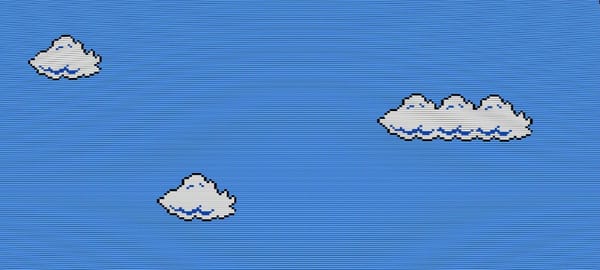Buy Now, Cry Later
This week’s newsletter hits on everything from TV’s changing format to Star Wars monologues—and the quietly devastating economics of being a young artist in 2025.

Welcome to This Week’s Issue
This week’s newsletter hits on everything from TV’s changing format to Star Wars monologues—and the quietly devastating economics of being a young artist in 2025.
Also, quick heads up: it’s my birthday today. So to celebrate, we’re giving everyone a special discount on membership for the next 24 hours. If you’ve been thinking about joining, this is your sign.
Thanks for reading, supporting, and staying creatively stubborn.
Let’s get into it.
Unlock full access to our site and support independent creative journalism. Your membership helps us continue telling the stories that matter. Now offering 90 days for free, because it's my birthday and I love you guys.
This Week’s Top Stories
Why the Decline of the 20+ Episode Season Hurt us All
Do longer seasons really represent the bottom tier of television, or have we just gotten lazy?
By Milly Guemple, 16 Apr 2025 — 5 min read
There’s a certain connotation that seasons with more episodes, anywhere from 12 to 24, are taken less seriously than shorter seasons. In recent years, sleeker runs have come to represent a more “elevated” form of television, with fewer episodes suggesting tighter writing and cinematic prestige. But are we actually losing something by ditching long-form storytelling? Read the full story here.
Andor: Luthen's Legendary Monologue
The stirring speech that defines Andor, and what it teaches us about rebellion and realism in storytelling.
By Oliver Stevens, 16 Apr 2025 — 8 min read
Among all the nostalgia-heavy Star Wars content, Andor stands apart. No lightsabers, no fan service, just sharp writing and even sharper monologues. At the heart of it all is Luthen Rael’s cold, brutal speech about sacrifice. We break down what makes it unforgettable—and why it might be the most important piece of dialogue in modern sci-fi. Read the full story here.
Buy Now, Cry Later

Gen Z can’t afford Coachella, but we’ll still go, even if it means going into debt for a selfie.
Payment plans have become our generation’s favorite illusion. Want to see Lana Del Rey in the desert? That’s $49.99 down and $41 in fees spread across six months. Suddenly, a $650 ticket feels like a mood instead of a financial decision. That’s by design.
What used to be called “living beyond your means” is now just another tab open in the Klarna app. Culture has a price tag, and we’ve been conditioned to finance it. We’re not just splitting up sneakers and festival tickets,we’re slicing up identity, connection, and belonging into biweekly payments. Art and experience, à la carte, with a side of interest.
This isn’t just a financial strategy, it’s survival wrapped in aesthetic. We’ve turned cultural participation into a revolving credit line. Because in a society that equates worth with visibility, opting out isn’t really an option.
It doesn’t feel empowering. It feels like you’re constantly behind. I’ve been told I make more money than my parents did at my age, but it doesn’t feel like it—not when everything costs more, not when the cost of showing up to life is this high.
There’s this pressure to experience your 20s—travel, go out, say yes to life. But we’re also expected to build stability, make smart moves, set ourselves up for a future that feels increasingly out of reach. And for those of us in the arts, that tension cuts even deeper.
A lot of creatives I know, including myself, are trying to shift into tech. Not because we stopped caring about our art, but because we’re scared. We’re hoping there’s a way to integrate both—something sustainable. But even tech, once seen as a safe bet, is starting to crack. Layoffs, instability, the creeping sense that there might not be a safety net anywhere.
The truth is, most of us aren’t choosing payment plans because we feel empowered. We’re choosing them because we don’t want to miss out. Because culture is still one of the few things that makes us feel connected, seen, human. And if the only way in is splitting the cost over six months, then fine. We’ll pay in installments. We just wish the price wasn’t always rising. This is the reason why events like "The Morning Spin" in Austin, a moving DJ set that travels to coffee shops—and activities like DJs in bathrooms or DJs at home parties are so popular. We're returning to the nitty-gritty to ensure we can still have our fun for those who aren't willing to fork up the money for these large events.
So where does this leave us?
Somewhere between broke and branded. But also, strangely, devoted. If Gen Z is willing to break their paychecks into twelve slices for the sake of connection, maybe that means something. Maybe it’s a new kind of cultural loyalty,broke but unbothered, indebted but still showing up.
It’s not sustainable. But it is real. And right now, that might be all we've got.
Want to weigh in?
Reply to this email and tell us: what’s the last thing you broke into payments just to make it happen?
The Art Newsletter is made possible by readers who believe in thoughtful, smart, and unfiltered writing about the creative world. Thanks for being here.
For less than a dollar a day, unlock full access to our site and support independent creative journalism. Your membership helps us continue telling the stories that matter. Try it free now for 90 days.
7 Actionable Steps for Thriving as an Artist in 2025
We understand the hassle it is to navigate the creative landscape in our modern era. Thats why we used our team of successful artists and creatives came together to make this free document.
Here’s how to receive it:
Step 1: Share The Art Newsletter with a friend—just send them this signup link: 👉 www.theartnewsletter.com/subscribe
Step 2: Once they sign up, they’ll get instant access to the guide—and they can send it to you too!
No tracking, no forwarding, no hassle. Just help us grow the community, and everyone wins.
Thank you for reading and for your continued support. - Wolfgang





